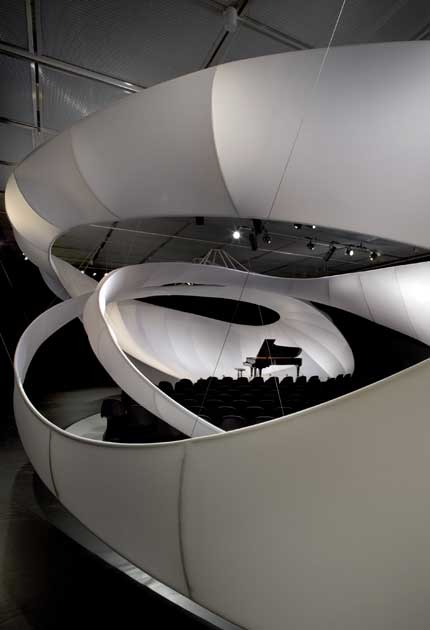Bach/Zaha Hadid, Manchester City Art Gallery, Manchester
Perfect union of sound and space

Your support helps us to tell the story
From reproductive rights to climate change to Big Tech, The Independent is on the ground when the story is developing. Whether it's investigating the financials of Elon Musk's pro-Trump PAC or producing our latest documentary, 'The A Word', which shines a light on the American women fighting for reproductive rights, we know how important it is to parse out the facts from the messaging.
At such a critical moment in US history, we need reporters on the ground. Your donation allows us to keep sending journalists to speak to both sides of the story.
The Independent is trusted by Americans across the entire political spectrum. And unlike many other quality news outlets, we choose not to lock Americans out of our reporting and analysis with paywalls. We believe quality journalism should be available to everyone, paid for by those who can afford it.
Your support makes all the difference.Zaha Hadid's new "sound installation" – rigorous yet delicate – doesn't actually make any sound. It's a bold visual statement, a gigantic piece of stretchy white Lycra zig-zagging around a top-floor gallery of Manchester's City Art Gallery. For the Manchester International Festival, in a co-commission with the Holland Festival and the Abu Dhabi Music and Arts Foundation, she has stitched together a temporary 192-seat concert hall, a lunar module of sinuous beauty in which the listeners, on inky black Verner Panton "S" chairs, are cocooned in a gigantic billow of swirling fabric.
With clear acrylic acoustic panels suspended discreetly within folds of the material and the steel frame hidden from view, it's a cunning creation of seamless ingenuity providing a curiously reverential setting. The "sound" part of the installation is added by threeyoung soloists playing music by J S Bach over nine evenings, a kind of "Zaha Hadid Architects meets Bach, on a blind date across three centuries".
First came that most persuasive of interpreters of Bach on piano, Piotr Anderszewski, with the second and sixth Partitas and the English Suite No 6. He combined dramatic energy with extraordinarily wayward-sounding broken phrases, vehement chordal attacks followed by disorientating contrapuntal games. His rhythmic drive was particularly dazzling in the vivacious Courante of the C minor Partita. With the lightest use of the pedals, this extraordinary Polish musician made the textures shimmer, the slower movements intensely sustained and coloured with subtle shadings giving them a timeless gravitas.
Though billed to play just three suites (Nos 1, 4 and 2 in that order), the French cellist Jean-Guihen Queyras added a generous encore with the whole of the Third Suite, as well as echoing Bach with Gyorgy Kurtag's tiny aphorism Faith. An unerringly instinctive musician, Queyras has a warm expressive sound and simply allows the music to speak. He conveyed the luminosity of the courtly dance movements with open-hearted ease, was poetically engaging in the preludes and vibrantly alert in the volleys of notes that spun off his modern bow and strings in the brisk courantes and driving gigues.
In realising Bach's aim of "making the ear conscious of the true content and effect of each work", both performers provided the listener with an opportunity to refine his or her own perspective on Bach's remarkable inventiveness. When given such wonderfully lucid, thoughtful and clearly articulated readings, the music gets under the skin in its own right, more so in such an intimate, enveloping environment. The young Russian violinist Alina Ibragimova has a lot to live up to next weekend when she tackles a daunting programme that features the second and third sonatas and partitas.
Performances to 18 July www.mif.co.uk; lunchtime student recitals daily to 19 July, admission free
Join our commenting forum
Join thought-provoking conversations, follow other Independent readers and see their replies
Comments